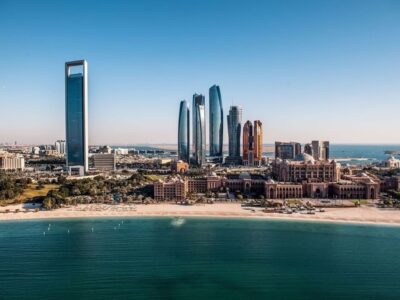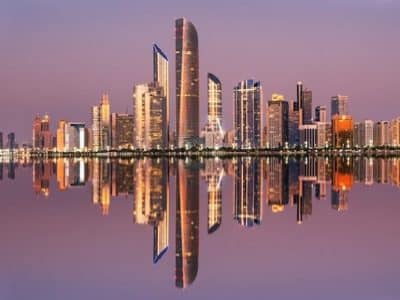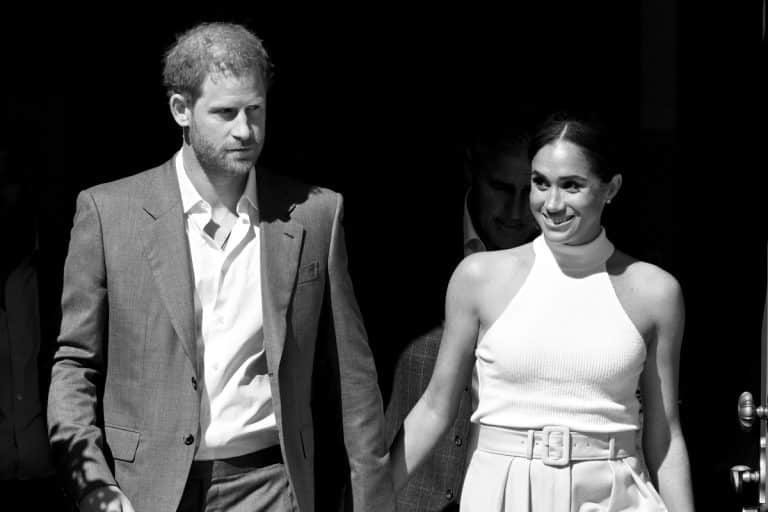Netflix has released a new television series filled with all the elements needed to make a story gripping, right from the start.
Harry & Meghan’s key themes? Monarchy, racism, and the British press.
The three-hour series begins with a disclaimer, stating that “This is a first-hand account of Harry and Meghan’s story, told with never before seen personal archive,” and added that members of the royal family “declined to comment”.
Expected, naturally.
However, both “Haz” and “Meg’s” close friends and Markle’s mother Doria Ragland, have taken a few minutes of the frame, to help tell their story.
In the first episode, the viewer is in for a story that one would title as ‘a match made in heaven’. Focused on their individual childhoods, growing up in a broken family and their accomplishments, they somehow meet in the middle, the documentary narrates.
However, Prince Harry and Meghan Markle’s story was scooped up by the press a few months into the relationship, shocking not just the world but also the royal family especially as they wondered how “a ginger could land such a beautiful woman and such an intelligent woman,” according to the prince.
But that was just the beginning
“H” spoke about how the paparazzi held the narrative of his life – keeping an eye on him, his girlfriends, and anyone who he was ever associated with.
He recollects how memories of his mother, the late Princess Diana, were of being “swarmed by paparazzi”.
“Rarely did we have a holiday without someone with a camera jumping out of a bush, or something,” the Duke of Sussex said in the documentary.
It was the very same paparazzi that made him “block out” memories of his own mother, with the memory of her “cheeky laugh”.
After years of being “swarmed,” when Harry met “M”, he was “terrified,” he said. “I was terrified of her being driven away by the media — the same media who’d driven so many people away from me.”
And yet, the paparazzi took them as their own – narrating their lives, invading their privacy, setting out camp outside single Meghan’s home while she was on set for then-American TV show Suits.
Once they went public with their relationship, things took a turn when the British press turned their eye on the nature of Markle’s race, the show insinuates.
In the second episode, the viewer is taken behind the scenes of Meghan’s life – her childhood, her parents, and activism, before she met the prince.
And while her childhood seems less turbulent than her present, it is her past that continues to haunt her while she moves towards the future.
Meghan’s mother Doria Ragland, is the new character introduced in the second episode.
Ragland, who seemed to have led a simple life in Canada, after her divorce from Markle’s father Thomas, was scrutinised for her race during a few incidents, Markle recalled.
When the British press dug deeper into “Harry’s girl”, they published a piece titled “(almost) straight outta Compton,” which Markle clarifies has startlingly untrue.
It was then when Ragland told Markle that the negativity arose because her daughter is mixed-race. “I said to her — I remember this very clearly — that ‘This is about race,’” Ragland said. “You may not want to hear it, but this is what’s coming down the pike,” she added.

However, in the third episode, the British press decided to go the extra mile – quite literally.
Ragland recalled that she was “stalked by the paparazzi” and “felt unsafe a lot.”
“I can’t just go walk my dogs, I can’t just go to work. You know, there was always someone there waiting for me, following me,” she said.
And when the stalking began, Markle reached out to the Toronto Police for help, only to find out there was nothing they could do because of “whom you’re dating”.
The episode only talks about her estranged half-sister Samantha, her uninvited-yet-close-to niece Ashleigh and her paid-for-posing father Thomas.
When the royal wedding was announced, Meghan said she believed that her father has been secretly taking money from the press to pose for photos that could potentially warm the public’s hearts.
Around the time of the couple’s wedding, Meghan said she believed her father had been taking money from the news media.

However, when Markle and Harry confronted Thomas about it, she said he would not pick up the phone and said he had suffered a heart attack.
Someone even sent her text messages, using his number, in a texting style that she did not recognise.
“It called me ‘Meghan,’” she said, adding. “I was, like, ‘He’s never called me Meghan any day I’ve lived on this planet.’”
Markle even said that the person sending the text messages was likely an impostor.
The royal family are not the villains, except for one (sort of)
During the three episodes of the three-hour docuseries, the royal family were the recipients of positive comments.
Markle recalled her first Christmas with them, where she sat down next to late Prince Philip, talking to him all evening, despite him lending a “bad ear”, according to Prince Harry.
Markle also recalled how she called Ragland after the dinner in happiness, explaining that, “It’s just like a big family, like I always wanted.”

However, there was one member of the royal family who wore an ill-advised brooch of an African man to lunch with Markle. Whether Princess Michael of Kent’s, the royal in question, decision to wear the brooch had been intended as an insult remains a mystery.
Princess Michael of Kent, had to formally apologise for her choice of accessory on that particular day, with critics identifying the brooch as racist.
“In this family, sometimes you’re part of the problem rather than part of the solution,” Prince Harry said, adding that “there is a huge level of unconscious bias.”
Prince Harry also said that the royals had failed to understand “as far as a lot of the family were concerned, everything that she was being put through, they’d been put through as well,” he said in terms of Markle’s race, adding, “it is almost a rite of passage.”
Volume II of the series will also include three episodes, all of which will release on December 15.





